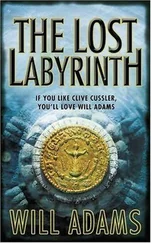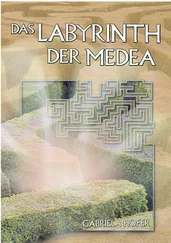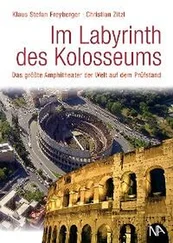St Paul’s Labyrinth
JEROEN WINDMEIJER

A division of HarperCollins Publishers
www.harpercollins.co.uk
KillerReads
an imprint of HarperCollins Publishers Ltd
1 London Bridge Street
London SE1 9GF
www.harpercollins.co.uk
First published in Great Britain by HarperCollins Publishers 2018
First published in Holland in 2017 by HarperCollins Holland, as Het Pauluslabyrint
Copyright © Jeroen Windmeijer 2017
Translation copyright © HarperCollins Holland 2017
Cover Design © Wil Immink Design
Cover images © Shutterstock.comand iStockphoto.com
Jeroen Windmeijer asserts the moral right to be identified as the author of this work.
A catalogue copy of this book is available from the British Library.
This novel is entirely a work of fiction. The names, characters and incidents portrayed in it are the work of the author’s imagination. Any resemblance to actual persons, living or dead, events or localities is entirely coincidental.
All rights reserved under International and Pan-American Copyright Conventions. By payment of the required fees, you have been granted the non-exclusive, non-transferable right to access and read the text of this e-book on screen. No part of this text may be reproduced, transmitted, down-loaded, decompiled, reverse engineered, or stored in or introduced into any information storage and retrieval system, in any form or by any means, whether electronic or mechanical, now known or hereinafter invented, without the express written permission of HarperCollins.
Ebook Edition © August 2018 ISBN: 9780008318468
Version: 2020-01-23
Table of Contents
Cover
Title Page
Copyright
Prologue
Chapter 1
Chapter 2
Chapter 3
Chapter 4
Chapter 5
Chapter 6
Chapter 7
Chapter 8
Chapter 9
Chapter 10
Chapter 11
Chapter 12
Chapter 13
Chapter 14
Chapter 15
Chapter 16
Chapter 17
Chapter 18
Chapter 19
Chapter 20
Chapter 21
Chapter 22
Chapter 23
Chapter 24
Chapter 25
Chapter 26
Chapter 27
Chapter 28
Chapter 29
Chapter 30
Chapter 31
Chapter 32
Chapter 33
Chapter 34
Chapter 35
Chapter 36
Chapter 37
Chapter 38
Chapter 39
Chapter 40
Chapter 41
Chapter 42
Chapter 43
Chapter 44
Chapter 45
Chapter 46
Chapter 47
Chapter 48
Chapter 49
Epilogue
Acknowledgements
Consulted Literature
Notes
About the Author
About the Publisher
Mérida (Hispania), 72 AD
The executioner draws his sharpened dagger across the convict’s belly, slicing it open with a single cut. A torrent of blood gushes out, like water breaking through the walls of a dyke. The man screams in agony as his guts spill like skinned snakes down to his knees. Then the birdmen come, their eagles balanced on their leather armguards. The birds’ sharp beaks take great, greedy bites of the man’s exposed liver. The three other men, lashed to wooden stakes and doomed to the same fate, struggle hopelessly to escape.
The audience is ecstatic. This amphitheatre, built during the reign of Caesar Augustus, is big enough to hold sixteen thousand. Today, every single seat of its three tiers is occupied.
After the venatio , the staged hunt of exotic beasts, comes the spectacle of public executions. During today’s underwhelming opening act, in which a few criminals were merely beheaded, many took the opportunity to relieve themselves in the catacomb latrines.
The executions are inspired by stories from ancient Greece and the public appreciates the creativity with which they are carried out. After the eagles have eaten their fill of entrails and the four men have died – as in the tale of Prometheus – four wooden ramps are wheeled into the arena. In the middle of each ramp is an enormous boulder. Convicts are brought out to recreate the Sisyphean task of rolling the rocks to the top of the ramps, a feat which they naturally all fail to accomplish. The sound of their breaking bones travels all the way up to the third tier.
Another group of men is sent into the sweltering arena. They have gone without food and drink for days and must now attempt to reach the bread and jugs of water that dangle from the stands on long poles. To the crowd’s delight, just before they grasp them, the poles are raised high above their heads, making the bread and water as unreachable as they were for Tantalus. When the public’s attention begins to wane, starved dogs are released to rip the men apart.
Now, eight men covered in oil and pitch are brought into the ring and tied to stakes. Roman boys, none of them a day over twelve, shoot flaming arrows at the prisoners until they eventually begin to burn. The men scream as they meet their fiery end and a murmur of approval rumbles around the amphitheatre. This may not have been inspired by a Greek story, but it is a novelty that has never been seen before.
A late arrival makes his way to the stands and looks for a seat on the end of one of the benches. He is small, and his legs are crooked, but he looks sturdy, with eyebrows that meet above a long nose. He is a charismatic man and he radiates the serenity of an angel. A brief look at the young man who is already sitting on the end of the bench is all that is needed to create space. He takes his seat and sets his small earthenware jug on the ground next to his feet.
While the dead criminals are dragged from the arena and the patches of blood are covered with fresh sand, musicians and fools do their best to entertain the public with acrobatic antics. The crowd cheers as dozens of boys and girls enter the stands carrying huge baskets of bread between them. The distribution of bread at the games began two years ago in Rome and was so popular among the commoners that the practice rapidly spread to every corner of the Empire. The boys and girls walk up the steps, throwing hunks of bread into the crowds. A forest of arms reaches up to meet them where they land. Once caught, the bread is swiftly tucked beneath cloaks, leaving hands free to snatch another piece.
‘ Panem et tauros ,’ the youngster says mockingly to the old man next to him. Bread and bulls. He takes the chunk of bread that has fortuitously landed in his lap and, without looking, sullenly hurls it in a huge arc behind him.
But this is what most people have come for today; for the bread, but mostly to see the bullfight.
The editor muneris , the sponsor of today’s games, orders the release of the bull by raising his arm in an impressive saluto romano. A deafening cheer fills the arena. The editor looks around the crowd, then, gratified, returns to lie on his couch. He picks up a small bunch of grapes from the lavishly spread table next to him and watches as the gigantic, wildly bucking bull enters the amphitheatre. The animal has been force-fed salt for days and denied even a drop of water. It has spent the last twenty-four hours in a stall too small for its enormous mass while its belly was battered with sandbags to cause internal bleeding. The game has been rigged before it has even begun. He cannot win today.
Now the ministri , the attendants, enter the arena. They taunt the bull with huge capes, assessing its strength, intelligence and fighting spirit. They wave the brightly coloured cloths with great bravado, skilfully dodging the bull’s charges. Gasps of awe pour down from the stands and into the arena, like the waters of a river tumbling down a mountainside.
Читать дальше













